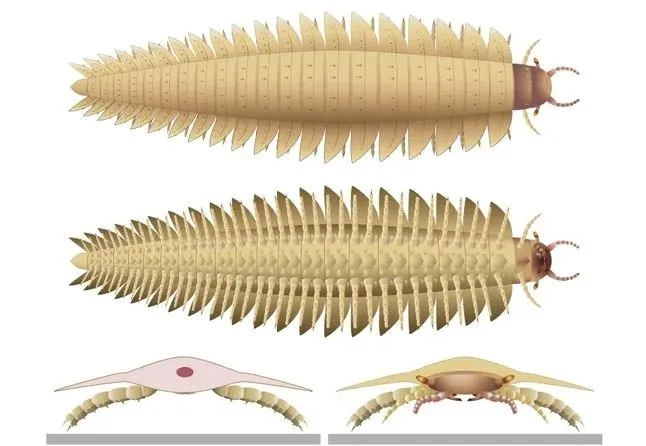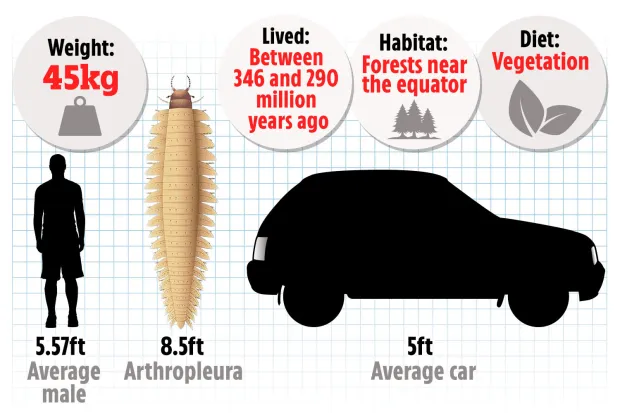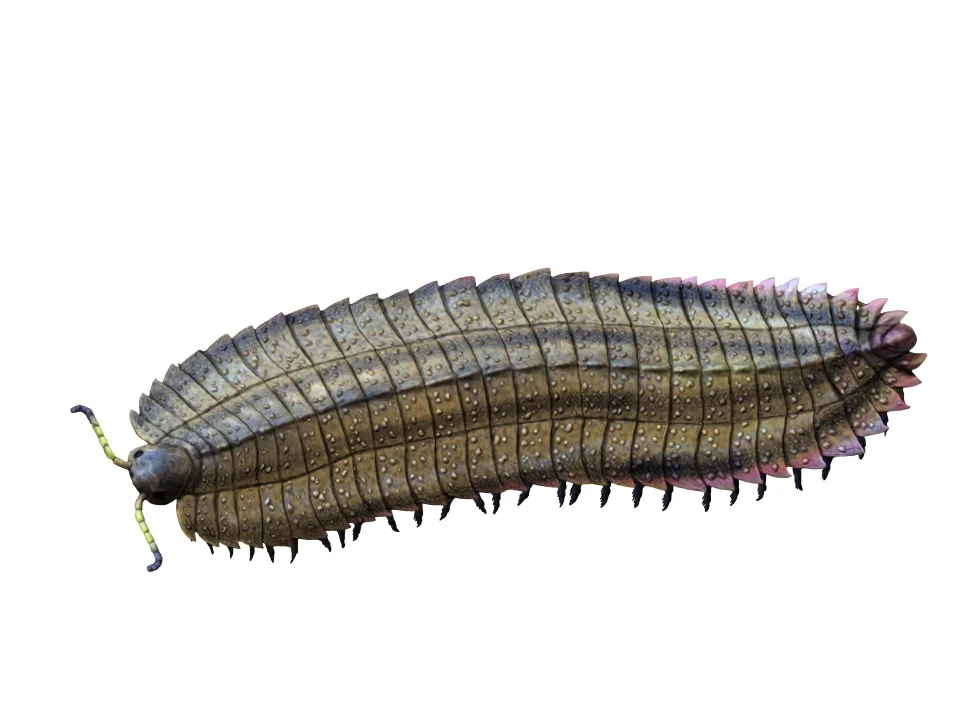A team of scientists has uncovered the face of one of Earth’s most gigantic and mysterious inhabitants—the Arthropleura.
This incredible car-sized creature, similar to a mammoth millipede, lived around 340 million years ago, during the late Paleozoic era.

The Arthropleura, recognized as the largest arthropod to ever exist, had perplexed researchers for years due to the absence of complete fossil remains, particularly its head.
However, following recent discoveries of remarkably preserved juvenile fossils, paleobiologists have finally succeeded in reconstructing this creature’s face.
According to the latest research, the head of Arthropleura featured a round, bulbous structure adorned with two bell-shaped antennae and two protruding eyes, reminiscent of modern crabs.
Surprisingly, despite its massive size, the creature had a small mouth adapted for chewing vegetation like leaves and bark, indicating a plant-based diet.
It thrived in the oxygen-rich forests near the equator, extending up to 8.5 feet in length and weighing over 45 kilograms.

Arthropleura’s body displayed characteristics typical of millipedes, but its head resembled that of a centipede.
This finding was corroborated by Mickael Lheritier, a paleobiologist from the Claude Bernard Lyon University, who emphasized the unique combination that made Arthropleura a formidable creature of its time.
The main challenge in studying Arthropleura was the scarcity of its head fossils, often missing from previously discovered specimens.

Over millennia, what had been found were mostly molted exoskeletons, which these creatures shed through openings in their head as they grew.
This left evidence of their massive size but no insight into their facial features.
The turning point came with the discovery of juvenile Arthropleura fossils, embedded in rock within a French coal field since the 1980s.
Using advanced CT scanning technology, scientists were able to explore these specimens without causing harm.
This non-invasive method revealed crucial clues about a creature’s head that had remained hidden for centuries.
James Lamsdell, a paleobiologist at West Virginia University, wasn’t involved in the study but expressed the long-standing desire within the scientific community to understand the head structure of this ancient arthropod.
The CT scans not only paved the way for mapping the head, but they also ensured the delicate fossils remained intact.
Though the juvenile fossils were only about two inches long, the details derived from them offered crucial insights into how the Arthropleura looked during its reign over our planet more than 300 million years ago.
The discovery answers many questions about this prehistoric titan and begins to clarify its connection to modern-day arthropods—creatures like insects, crabs, and spiders.
All these findings have been compiled in a study published in Science Advances, finally bringing a face to the name of one of Earth’s most extraordinary ancient creatures.
This breakthrough has not only solved a historical puzzle but has also opened doors for further understanding of other mysterious prehistoric life forms.
